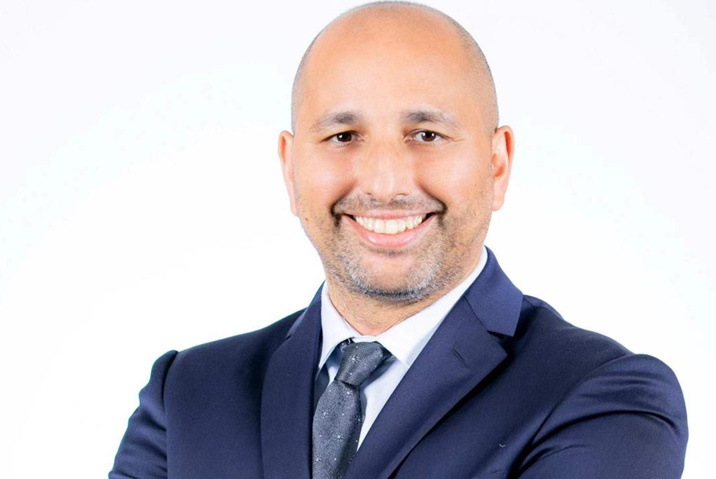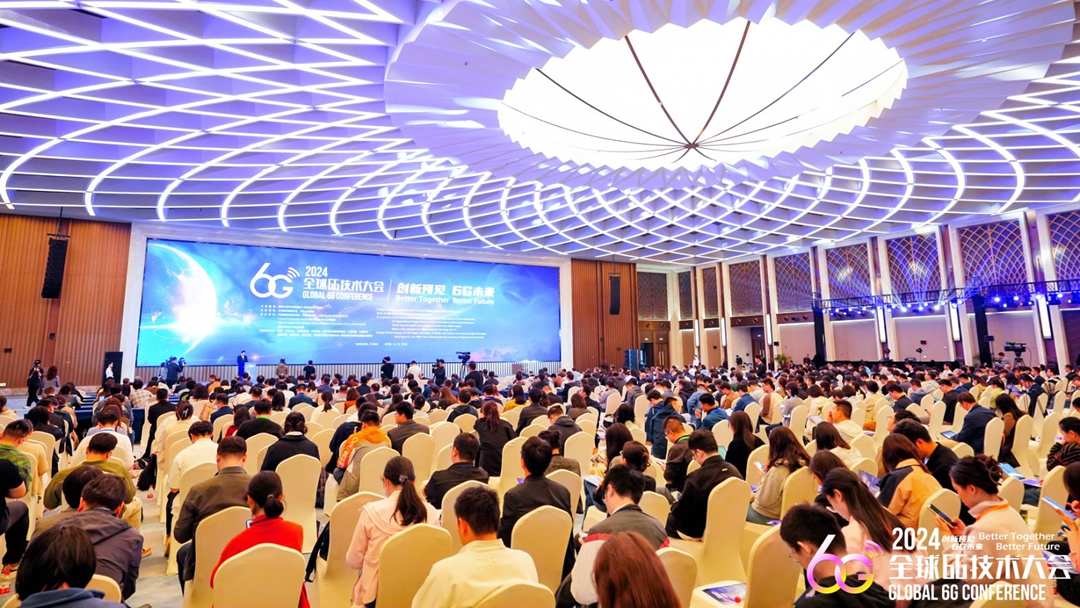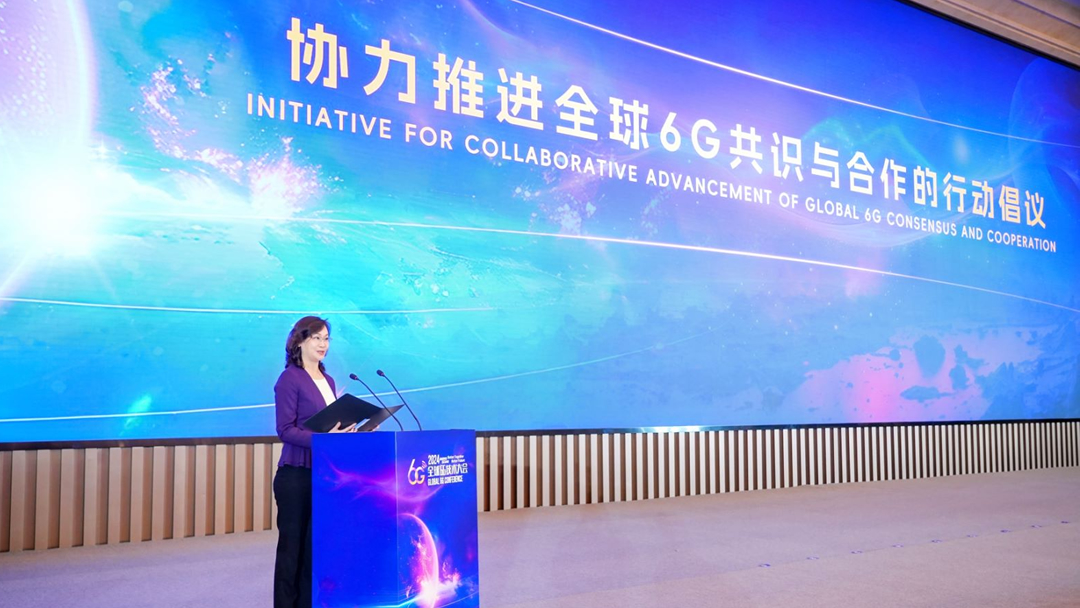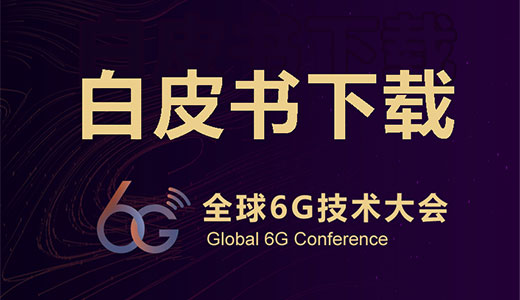Global 6G Conference 2023 Opens in Nanjing
From March 22 to 24, under the theme of "Better Together, Better Future," the Global 6G Conference 2023, guided by the National 6G Technology R&D Promotion Working Group and the General Experts Group and co-sponsored by FuTURE FORUM and Purple Mountain Laboratories, was held in Nanjing, east China's Jiangsu province. With the goal of deepening international exchanges and cooperation and building a bridge for collaborative innovation, the conference takes the form of on-site discussion + remote interaction in many places around the world, brings together experts and scholars in the 6G field from more than ten countries at home and abroad to discuss the latest development and application prospects of 6G technology, and exchange cutting-edge ideas and research results in the field of information and communication. Zhang Guangjun, Vice Minister of Science and Technology, Deng Xiuming, Deputy Secretary of the Jiangsu Provincial Committee of the CPC , and Chen Zhichang, Mayor of Nanjing City, attended the opening ceremony on March 23rd and delivered speeches. Seizo Onoe, Director of Telecommunications Standards Bureau of International Telecommunication Union, delivered a keynote speech. Wu Hequan, Academician of Chinese Academy of Engineering, President of FuTURE FORUM, delivered a keynote speech.
At present, the development of 6G is in the window period of vision demand formation and key technology selection. It is necessary to effectively gather the consensus of 6G research and development, technology, scene, standardization and other aspects, cultivate the global consistent 6G concept, and expand the space of international cooperation. For the first time, Global 6G Conference 2023 invited important international 6G academic organizations such as Finnish 6G Flagship, Japan's 5G Forum, and Singapore's Future Communications Research & Development Program to co-organize relevant forums.
In the form of technical reports, international forums in terms of Europe, America, Asia, and the Round Table Forum, the convention focused on four topics: 6G Use Cases & Standardization, 6G Network Architecture & Native Security, 6G Wireless Transmission & Spectrum Sharing, and Integrated Space-Air-Ground Network and On-demand Services. The forum further discussed 6G network reform and technological innovation, enhanced international 6G cooperation, promoted the formation of global unified 6G standards and ecology, and injected new vitality and impetus to 6G technology and future industry development.
Zhang Guangjun pointed out in his speech that China attaches great importance to 6G development. The Outline of the 14th Five-Year Plan for Economic and Social Development (2021–2025) and Long-Range Objectives through the Year 2035 of the People’s Republic of China and the 14th Five-Year Plan for the Development of the Digital Economy clearly propose to lay out the reserves of 6G network technology in a forward-looking manner, require more support for 6G technology research and development, and actively participate in promoting 6G international standardization. To date, China has made important progress in the research of key technologies. This includes 6G ultra-massive multiple-input multiple-output (MIMO), THz communications, integrated sensing and communication, endogenous AI communication, deterministic networking (DetNet), and integrated satellite-terrestrial networks. The Chinese government has always been committed to opening up science and technology to the outside world and actively integrating into the global innovation network. Focusing on the 6G field, the Ministry of Science and Technology of the People's Republic of China will, with the goal of "building the infrastructure of the future digital world", support the joint exploration and cooperation of global scientists around the vision and application, network and coverage, transmission and devices, etc., and welcome the participation of international enterprises, research institutions and universities.
Seizo Onoe demonstrated the importance of bridging the standardization gap in his keynote speech by reviewing the development history from 1G to 5G. He said that in the development of mobile communication in 6G and beyond, it is still necessary to continuously carry out standardization work so that the technology can evolve in an orderly and controlled manner. He concluded that the pursuit of sustainable and meaningful evolution of mobile communications should be pursued without being misled by false market demands, and the intergenerational evolution of mobile communications should be promoted by pursuing the evolution of technical elements. We should promote collaboration among stakeholders to bridge gaps and encourage industry to play an important role in the field of standards.
Wu Hequan looked forward to the demand for 6G in the future development of mobile terminals in his keynote speech. He believes that from the perspective of the development of mobile communication, we have found a stage that is not only driven by technology, but also by demand. 6G has many KPIs, and each KPI will correspond to a specific application scenario, but there will be no application scenario that needs to meet all KPIs at the same time. For most applications, the frequency efficiency, energy efficiency, timeliness, and effectiveness of 6G are more important than the peak rate. The improvement of 6G networks in these aspects makes it necessary to build 6G networks five years after the commercial use of 5G-A. For mass applications, 6G may not necessarily present significantly different experiences than 5G and 5G-A, but it is worth upgrading to 6G networks, because each generation of networks will have higher frequency efficiency, energy efficiency, timeliness, and effectiveness than the previous generation.
At the opening ceremony, FuTURE FORUM released the Global Initiative for 6G International Cooperation and Collaboration Development. The Initiative advocate the creation of a platform for joint research, development, and progress sharing. Let us leverage global wisdom to realize complementary strengths, collaborative innovation, resource sharing, and win-win mechanisms. It also suggests the exploration of a new paradigm of global open cooperation. Let us set up 6G international cooperation projects with funding and support of diverse channels.
Gerhard P. Fettweis, Chair Professor of Dresden University of Technology and Academician of German National Academy of Science and Engineering, highlighted the issue of "Energy Wall". Sustainability of energy issues is particularly worthy of consideration in the 6G era.
Takehiro Nakamura, Chief Technical Architect of NTT DOCOMO's R&D Innovation Department and President of the White Paper Subcommittee of Beyond 5G Promotion Consortium, said that he believed that China and Japan would have in-depth cooperation in many aspects, including more efficient sensing technology and the implementation of 6G through millimeter Wave (mmWave) Technology Promotion.
Rui L. Aguiar, President of the Steering Committee of ETP Networld Europe, said that he was intensively conducting some relevant experimental research to achieve good coupling and common development with vertical industries.
Sungho Choi, Project Manager of Future Communications and Radio of the Ministry of Science and ICT of the Republic of Korea, introduced the K-Network 2030 Plan, which aims to build a next-generation network system, build the best technology and software-based network innovation initiatives, and strengthen the supply chain in the future era of digital precision.
Edward G. Tiedemann, Senior Vice President of Qualcomm and appointed officer of IEEE ComSoc, believes that 6G is a universal access service, which ensures reliable and low-latency communication service quality, truly realizes more real-time control, reduces energy consumption and latency, and improves energy utilization. So it needs to address these issues from a system-wide perspective.
You Xiaohu, Deputy Director of Purple Mountain Laboratories, Professor of Southeast University, and Secretary-General of FuTURE FORUM systematically introduced the recent R&D Activities of 6G in China and the key technological progress of Purple Mountain Laboratories in a keynote speech. He said that Purple Mountain Laboratories is one of the important research institutions of China's B5G/6G wireless communication. In 2020, it released the first 6G white paper, proposing a 6G vision of "full spectrum, global coverage, full application and strong security", which has had a great impact on global academia and industry. The further enhancement of the original three scenarios of 5G proposed by Purple Mountain Laboratories and its partners, as well as the introduction of new scenarios of integrated sensing and communication and space-air-ground integrated application, have enabled the smooth evolution from 5G to 6G. You Xiaohu also introduced in his speech that Purple Mountain Laboratories is committed to the research of key technologies such as network digital twin, ultra-low time-delay space 2D channel coding, and optical fiber THz seamless integration system architecture, as well as the research and development progress of 6G comprehensive experimental environment.
At the same time, the conference released 12 6G white papers, including the Overall 6G White Paper, as well as a number of theme white papers such as 6G Integrated Sensing and Communication Network Architecture, Quantum Information Technology in the 6G era, Sustainable Low-Carbon Intelligent 6G, 6G network AI concept, 6G Network Native AI Technology Requirements, and 6G Data Service Concept And Requirements. The Overall 6G White Paper proposes that in the trend of evolution to 6G, information and communication technology will be further integrated with big data, artificial intelligence (AI) and system control technology to present the characteristics of data, operation, information and communication integration. It is a converged mobile information network with strong connection, computing power, intelligence and security. This white paper classifies and integrates 6G potential technologies and solutions from the perspective of system, and gives technical system suggestions.
Experts at home and abroad actively participated in the conference. Wu Jiangxing, Academician of Chinese Academy of Engineering, Liu Yunjie, Academician of Chinese Academy of Engineering, as well as Director and Chief Scientist of Purple Mountain Laboratories, Lu Jianhua, Academician of Chinese Academy of Sciences, Yin Hao, Academician of Chinese Academy of Sciences, Mao Junfa, Academician of Chinese Academy of Sciences, Lu Jun, Academician of Chinese Academy of Engineering, and other Academicians attended the conference and delivered speeches. Nearly 30 international experts from the United Kingdom, Germany, Finland, the United States, Canada, Japan, South Korea, Singapore, and other countries attended the Conference, accounting for about 1/3 of the total number of experts attending the Conference. During the pandemic, the first two conventions were mainly attended online. Many international heavyweight experts came to the site, including Seizo Onoe, Director of Telecommunications Standards Bureau of International Telecommunication Union, Tony Q.S.Quek, Academician of The Academy of Engineering, Singapore, Fumiyuki Adachi, Professor at Tohoku University, and Zhang Wei, Vice President of Vice President of ComSoc of Institute of Electrical and Electronics Engineers. They had face-to-face communication at the conference.
As Fu Jun, Deputy Secretary-General of FuTURE FORUM, said, in this important development window period of global 6G, we need to adhere to the pursuit of a unified global 6G innovation system. The Global 6G Conference is a platform jointly built by top scientists and research institutions from all over the world. It is hoped that on this platform, we will focus on topics of common concern, reach technical consensus, and share the results of cooperation.






